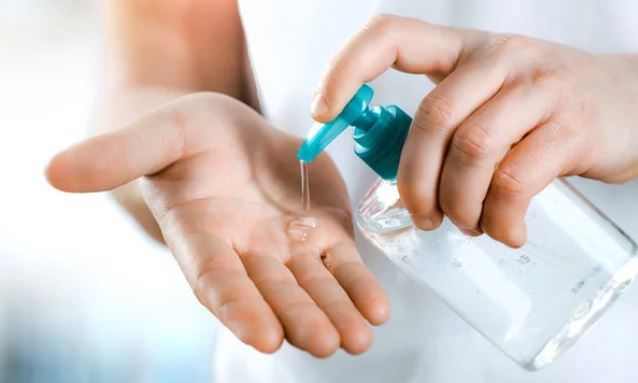In our daily lives, we are constantly surrounded by germs—bacteria, viruses, and fungi that are too small to see with the naked eye. While not all germs are harmful, many can cause illnesses ranging from the common cold to more severe infections. Understanding and practicing good hygiene is essential in protecting yourself and others from these potential health threats. Here’s a comprehensive guide to help you maintain effective hygiene and minimize the risk of germ-related illnesses.
1. Hand Washing: Your First Line of Defense
Hand washing is one of the most effective ways to remove germs and prevent the spread of infections. It might seem simple, but doing it correctly is crucial.
How to Wash Your Hands Properly:
- Wet Your Hands: Start by wetting your hands under clean, running water. Warm water is preferable, but cold water works too.
- Apply Soap: Use enough soap to cover all surfaces of your hands. Liquid or bar soap can both be effective.
- Lather Thoroughly: Rub your hands together to create a lather. Make sure to scrub all parts of your hands, including the back, between your fingers, and under your nails. Continue scrubbing for at least 20 seconds. An easy way to time this is to sing the “Happy Birthday” song twice.
- Rinse and Dry: Rinse your hands well under running water. Dry them using a clean towel or an air dryer.
When to Wash Your Hands:
- Before and After Meals: Always wash your hands before eating and after handling or preparing food.
- After Using the Restroom: Proper hand hygiene after using the toilet is crucial to avoid spreading germs.
- After Coughing, Sneezing, or Blowing Your Nose: These actions can spread germs, so wash your hands immediately afterward.
- After Touching High-Touch Surfaces: Surfaces like doorknobs, elevator buttons, and public transportation handles are breeding grounds for germs. Wash your hands after touching these surfaces.
2. Proper Cough and Sneeze Etiquette
Germs can be transmitted through the air when you cough or sneeze. To minimize the risk of spreading illness, follow these guidelines:
Cover Up:
- Use a Tissue or Your Elbow: When you feel the urge to cough or sneeze, cover your mouth and nose with a tissue. If a tissue isn’t available, use the inside of your elbow to prevent germs from becoming airborne.
- Dispose of Tissues Properly: Immediately throw used tissues in the trash and wash your hands.
Avoid Face Contact:
- Limit Touching Your Face: Your hands come into contact with various surfaces throughout the day. Touching your face can transfer germs from your hands to your mouth, nose, or eyes, increasing the risk of infection.
3. Cleaning and Disinfecting Surfaces
Germs can linger on surfaces for extended periods, especially on high-touch areas. Regular cleaning and disinfecting are essential to keep your environment germ-free.
Effective Cleaning Practices:
- Use Disinfectants: Apply disinfectant wipes or sprays to surfaces that are frequently touched, such as countertops, doorknobs, light switches, and remote controls. Ensure the disinfectant you use is effective against a broad range of germs.
- Follow Manufacturer’s Instructions: For optimal results, adhere to the directions provided by the product manufacturer. This usually includes allowing the disinfectant to remain on the surface for a specific amount of time before wiping it off.
4. Personal Hygiene Practices
Maintaining personal hygiene helps to prevent the spread of germs and promotes overall health. Here are some key practices:
Shower Regularly:
- Frequency: Regular showers help remove sweat, dirt, and germs from your skin. Aim for at least one shower per day or more if you engage in activities that make you sweat.
Change Clothes Daily:
- Clean Clothes: Fresh clothing reduces the likelihood of transferring germs from dirty or sweaty clothes to your skin.
Keep Personal Items Clean:
- Clean Technology: Phones, tablets, and computer keyboards can harbor germs. Regularly clean these items using appropriate cleaning solutions to reduce the risk of germ transmission.
5. Boosting Immunity with Healthy Habits
A strong immune system is your body’s best defense against germs. Here’s how to support it:
Balanced Diet:
- Nutrients: Include a variety of fruits, vegetables, whole grains, and lean proteins in your diet. Vitamins and minerals from these foods can help bolster your immune system.
Stay Hydrated:
- Water Intake: Drinking plenty of water helps your body flush out toxins and maintain hydration. Aim for at least eight glasses of water per day.
Regular Exercise:
- Physical Activity: Engage in regular physical activity to support overall health and enhance your immune response.
6. Vaccinations: A Crucial Preventive Measure
Vaccinations are essential for preventing diseases caused by germs. Ensure that you and your family are up-to-date with recommended vaccinations. Vaccines prepare your immune system to fight off specific germs, significantly reducing the risk of infection.
Conclusion
Good hygiene practices are fundamental in protecting yourself and others from the spread of harmful germs. By incorporating these tips into your daily routine—hand washing, proper cough and sneeze etiquette, cleaning surfaces, maintaining personal hygiene, and supporting your immune system—you can significantly reduce the risk of illness and contribute to a healthier community. Remember, your health is a priority, and effective hygiene is a key component of a healthy lifestyle.
